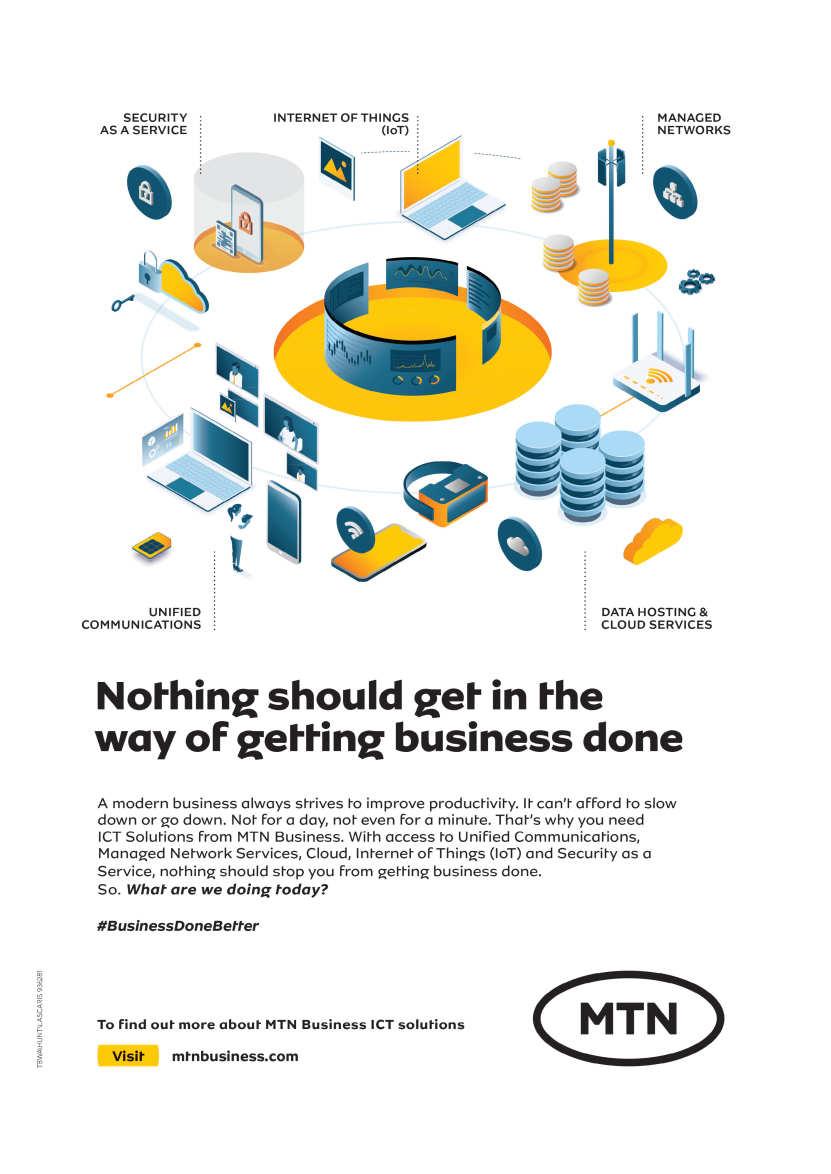
22 minute read
Optimising water treatment on mines
Relatively little water used during mining needs to be clean or potable, so mines can reduce both water consumption and treatment costs by understanding what water qualities are needed where, says SRK Consulting.
Most of a mine’s water will generally be used in the process plant, and these applications can usually manage with much lower water qualities.
According to Peter Shepherd, partner and principal hydrologist at SRK Consulting, the mining sector’s drive towards ambitious water conservation targets means recycling more so that less fresh water needs to be procured.
There is also a financial benefit to recycling, as having to treat water before use or discharge is an expensive exercise. Shepherd highlighted that treatment can be kept to a minimum if mines are clear about what level of water cleanliness is required by its different on-mine processes.
“Clearly, a mine does not want to be using potable water to mix with tailings for pumping to a tailings storage facility,” commented Shepherd. “Most of a mine’s water will generally be used in the process plant, and these applications can usually manage with much lower water qualities.”
That said, there would be specific phases of the plant that require cleaner water – for the mixing of reagents and chemicals, for instance. There is also a need for water that is low in sediment particles for use in the gland seals of pumps.
Mines can therefore optimise the reuse and recycling of their water through developing a water quality ‘cascade’, explained Bjanka Korb, principal environmental engineer at SRK Consulting. This will detail the minimum water quality demanded by each process, so that water is not treated to higher levels of quality that are needed at the point of use.
“This approach opens the door to increasing the volumes that can be reused and recycled,” added Korb. “The accumulation of water in the system and resultant discharge of low-quality water into the environment is thereby also minimised.”
An additional benefit is that the mine would be able to reduce its reliance on treated municipal water and therefore the operational cost to the mine could also be decreased. Where untreated dam water can be procured from a municipal source, the mine could use this directly in the plant – and only treat water to potable standards that is used in bathrooms, kitchens and drinking use.
Staying afloat
With more extensive reuse of water, Korb pointed out, water quality within the mine system can deteriorate to the point where regular intervention is required.
This is a consequence that must be carefully managed. “Fortunately, most regions have seasonal rainfall which assists with keeping the water quality cleaner. However, concentration of salts will occur over time regardless of this, and the reality is that mines may need to consider water treatment for recycled water in the later stages of the life of the mine.”
Developing the cascade approach needs a good understanding of the water and salt balance within the broader system – including the mine workings, the processing circuit, the tailings dam, the fresh water supply and the receiving watercourses.
“By identifying the major drivers of water use, a mine can better target its recycling efforts,” said Korb. “For instance, if the water being returned from the tailings dam is sediment-laden or there are other elements within the water that do not easily settle out, then it may not be usable in certain key plant processes.”
Achieving the best results from a water quality cascade relies on good communication between the management of the mine’s process plant and its tailings facility. Plant managers, who know the water volumes and qualities required from day to day, are important players in determining whether the process water demand can be fulfilled by return water from the tailings dam. The communication is vital as the tailings return water dams are often where most of the mine’s water is stored.
“The process plant and tailings teams together can assist significantly in managing the mine’s water balance, and in helping reduce the volumes of water being procured externally,” she said.
Shepherd noted that leading mining companies have recently begun appointing dedicated experts to focus on water stewardship, to ensure that strategies are implemented and coordinated mine-wide to conserve water use. This, he said, was a positive step towards balancing a mine’s need for optimal recoveries in the plant, with the need to reduce water consumption from external sources. n
WEC Projects, a South African EPC contractor specialising in water and wastewater treatment solutions, has completed the design, manufacturing, delivery, installation and commissioning of a new WEC Model B packaged sewage treatment plant for the Mothae Diamond Mine in Lesotho.
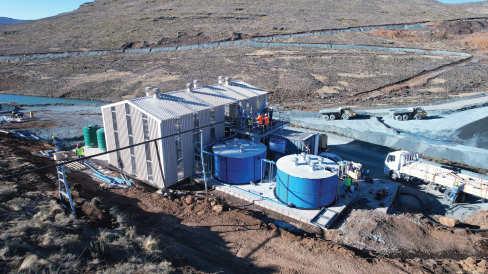
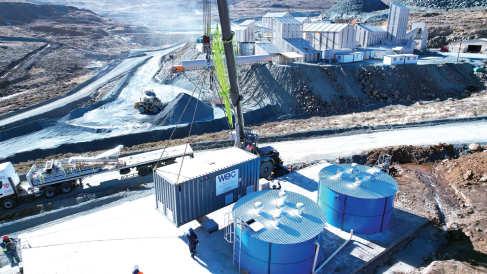
The Mothae Diamond mine, located in the Maluti Mountains about 135 km from Maseru, is a partnership between the Lucapa Diamond Company and the Lesotho Government and began production in 2019. Mining more than 30,000 ct of diamonds in its first year of operation, it also generates 60 cu/m of raw sewage every day, presenting a real issue around disposal.
Loreen Grobbelaar, project manager at WEC Projects, said, “Prior to the new treatment plant’s installation, the mine was forced to dispose of its sewage waste using honeysuckers / sewage trucks to transport the sewage to the nearest disposal facility, almost 100 km away. This was, understandably, an inefficient and costly disposal method.”
To deal with this problem, WEC Projects installed a conventional activated sludge (CAS) treatment plant which was delivered to the client at the beginning of September 2022.
Grobbelaar continued, “The mine’s relative remoteness made the logistics of transporting and installing a complete sewage treatment plant a challenge. However, the WEC Projects Model B plant is a packaged solution that incorporates a modular design with a small footprint. This made it much easier to transport to site, install and commission than other conventional treatment plants. We did encounter a few problems due to snowy weather and pump supplier delays but overall, we were able to complete the installation and commissioning of the plant on time.”
The Model B sewage treatment plant supplied to the mine is a combined activated sludge and clarification plant with a capacity to process up to 80 cu/m of raw sewage per day. An automated screening system inclusive of de-gritting and oil removal was installed upstream of the treatment system. In addition, the plant has been housed in a large facility to ensure that the correct temperature for optimal biological population growth is maintained (around 19°C) as it gets cold in the Maluti Mountains with large temperature fluctuations, particularly in winter.
WEC Projects was also contracted by the client to provide operations and maintenance services. To this end the company will provide the mine with quarterly audits of the treatment plant. A process engineer will travel to the site to take samples which will then be analysed by an accredited laboratory. WEC Assist, the operations and maintenance division of WEC Projects, will analyse the laboratory results which will allow for optimisation of the treatment plant by finetuning of the process.
WEC projects also provided specialist training to the mine’s operations staff during commissioning and will supply needed spares and consumables used in the sewage treatment process. n
The facility housing the bioreactor on the left ensures that the temperature remains at optimum levels for biological growth.
Rail networks are frequently utilised to serve mines across Africa.
Conveying success
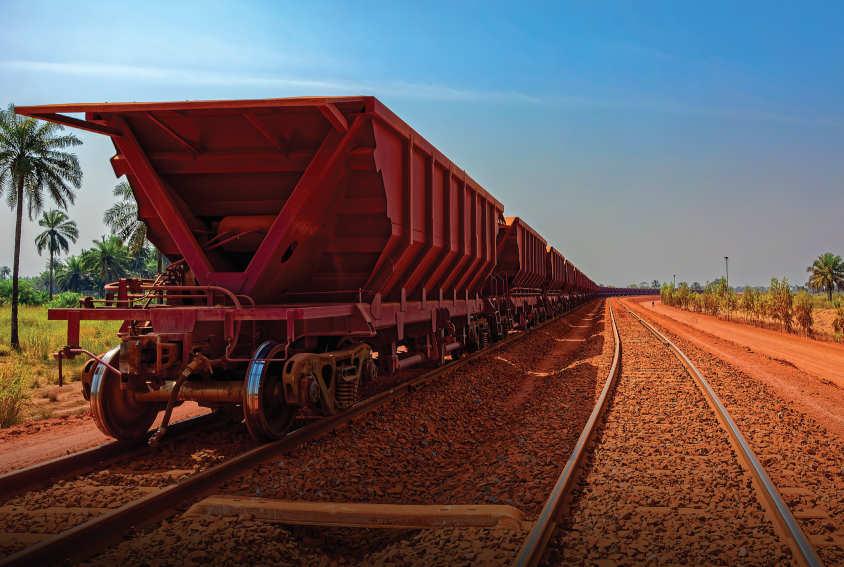
Transportation is critical in bringing the best out of Africa’s mines.
Mines are only as effective as the transport services supporting them. Without reliable and efficient conveyance to and from site for people and resources, there is little hope of them functioning to a practical standard.
This lesson has been most readily demonstrated in recent months by the strike action affecting Transnet’s rail and port network in South Africa. The Minerals Council South Africa estimated that bulk mineral exporters lost around R815mn (approx. US$45mn) worth of exports per day during the walkouts because they were unable to rail and load around 357,000 tonnes of iron ore, coal, chrome, ferrochrome and manganese onto ships daily.
“Around R151bn (approx. US$8.3bn) could be gained [on an annual basis] in additional exports, with the concomitant benefits of employment in mining increasing by 40,000 jobs to 500,000, the fiscus benefiting from improved tax revenue and higher revenues for Transnet if all rail and ports systems were optimally and efficiently run at design capacity,” the Minerals Council statement noted.
Such a challenge to one of the most important industries in one of Africa’s strongest economies is a stark reminder of the central role logistics plays within the mining sector. Fortunately, there are a plethora of companies lining up to offer their services across the continent and ensure Africa’s mines can reach their full potential.
To find out more about this aspect of the industry and the trends shaping it, African Review caught up with Dolores Biamou, mining projects director Africa at Bolloré Logistics.
African Review (AR): What are the biggest challenges with providing transportation services to African mines? Dolores Biamou (DB): Mines in Africa are usually located in remote areas where access can be difficult for many reasons such as lack of proper infrastructure (in some cases roads need to be built up to get access to the site); a need to deploy specialised equipment to handle out-of-gauge cargo; security issues in some areas, with necessity to escort convoys; and political sanctions (lately with border closure sanctions imposed on Mali for example).
AR: What are some of the transportation solutions best suited to serving African mines? DB: The choice of transport means depends on the location of the mine. Different means of transportation can be combined onshore from arrival at port; rail, road, river transportation (barge), and air, for example. Cargo safety also plays an important role when looking for the right transport solution.
We have an extensive experience in the management of major industrial projects in the mining sector from early works up to project execution. Our dedicated teams conduct feasibility studies in order to offer the best logistics solutions to our clients.
AR: What are some of the trends affecting services most on the continent? DB: We have noticed growing concerns from our mining customers in regards to CSR. This includes among others a strict compliance with the regulations of the countries in which they operate.
Mining companies are also much more aware of climate change concerns and promote sustainable projects. More and more solar plant constructions are being developed at mine sites. At the same time, sustainable fuels are used in the transport industry to reduce the carbon footprint for all means of transport. n
South Africa mining holds firm
South Africa’s mining sector has posted a sterling performance over the past year despite local and global challenges, according to a new report by PwC.
South African mining companies have found themselves in a strong financial position.

The SA Mine 2022 report published by PwC has indicated that the mining industry in South Africa has exceeded expectation on most fronts in regards to financial performance. This includes distributions to shareholders more than doubling, capital expenditure growing by 36%, and taxes paid increasing by 14%.
Notably, growing demand for commodities saw record prices for the platinum group metals basket, iron ore and coal, other commodity prices remained at relatively high levels and the global low-carbon energy agenda means there is an expected increased demand for a number of associated commodities in the medium- to long-term.
In the face of adversity
These achievements have been reached in a challenging time for the country. As related in the report, the South African economy was only 1.4% larger year-on-year in the first half of 2022 as the fallout from the Ukraine conflict, Covid-19 lockdowns (most notably in China), floods in KwaZulu-Natal, and the ever-present thorn of load-shedding restrained growth.
Despite experiencing labour strikes, higher-than-usual rainfall and continued disruptions to global supply chains, mining companies have found themselves in a strong financial position with debt largely repaid and returns to shareholders at many companies reaching record levels. The PwC report added that the fiscus also benefited from increased direct and indirect taxes and mining royalties to the extent that it could support ongoing socioeconomic grants during the pandemic.
Despite this growth, PwC expects a significant erosion of profit margins for the near-term as lower production levels and other pressures could increase unit costs above inflation and infrastructure challenges hamper companies’ ability to earn export revenues. Vuyiswa Khutlang, PwC South Africa energy, utilities and resources assurance partner, commented, “The remaining available cash resources leave mining companies with interesting capital allocation decisions. Strategies will include expansions and new development, acquisitions, strengthening of local infrastructure and host communities, as well as market development and investments up and down the value chain. Execution on these strategies will require disciplined long-term sustainable mind sets.”
Looking ahead
The report stated the country’s mining sector could really benefit from demand growth prompted by minerals required in the energy transition but the extent of this will largely depend on whether it can address bottlenecks in supply and mine to market infrastructure.
“There is an obvious need to invest in the right skills, infrastructure, energy and water, and in general, creating an enabling environment for exploration, mine development, production and sales.
“Realising the full potential benefit of our resources and creating long-term sustainable outcomes will depend on our ability to mine cost competitively and to integrate various value chains profitably,” remarked Andries Rossouw, PwC’s Africa energy, utilities and resources leader. ■
SANDVIK SHOWCASE ‘THE FUTURE OF MINING’ WITH 65 TONNE ELECTRIC TRUCK
Visitors were in for a treat during the Electra Mining Africa show as Sandvik unveiled their new 65 tonne TH665B battery electric vehicle (BEV) with the focus of providing for ‘the Future of Mining’.
According to Jakob Rutqvist, vice president of strategy and commercial at Sandvik, this innovation will take mining into the Fourth Industrial Revolution.
“Many industries are well advanced in the technological trajectory of digitalisation, automation and electrification – and it now mining’s turn,” he said.
“Fortunately, Sandvik has been positioning itself for some time to lead the industry in this journey into the future of mining.”
Rutqvist went on to highlight that Sandvik’s BEVs are faster, stronger and much less constrained than machines that are converted from a diesel design. A decade of experience has gone into applying battery technology into the mining sector, and it is a process that is now integrated into the business through its acquisition of US-based Artisan Vehicle Systems in 2019.
“Our display at Electra Mining Africa demonstrates our overarching commitment to achieve a full range offering of battery electric trucks and loaders – covering all major class sizes – by 2025,” Rutqvist said.
Alongside the 65 tonne BEV, Sandvik’s range includes a 50 tonne equivalent and an 18 tonne capacity battery electric LH581B underground loader – which is already on order from a South African gold mine.
Bolstering Sandvik’s theme of ‘the Future of Mining’ was the company’s AutoMine software offering for underground and surface mines. AutoMine is now installed on approximately 600 machines on mine sites worldwide.
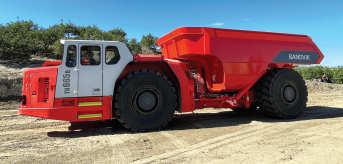
Sandvik’s 65 tonne TH665B battery electric vehicle.
FLSMIDTH LAUNCHES GAMECHANGING MINE OPTIMISATION SOFTWARE
FLSmidth promises to supercharge mine performance through digital solutions and equipment knowledge following the launch of PerformanceIQ Services at PERUMIN last month.
PerformanceIQ Services focuses on brownfield mining operations to detect performance gaps and identify priority solutions which enhance operational efficiency. Working in partnership with customers, local FLSmidth experts provide improvement targets and suggest the most appropriate and impactful actions for the specific operation to meet the mine’s characteristics.
The performance data of equipment and technology is monitored, adjusted and enhanced on a continual basis with the goal of achieving measurable, sustainable productivity improvements. These include the reduction in unscheduled downtime and a more efficient use of water and energy. After this phase, a cycle of analysis, value proposition, implementation and evaluation begins to create step-by-step improvements which become the foundation to move beyond the current objectives.
“Real, tangible benefits come with a full flowsheet approach to optimisation and through close work and partnership with our customers on site,” said service business line manager at FLSmidth, Joshua Meyer.
“Our experts bring local knowledge, process knowhow and experience and combine this with digital solutions that monitor, analyse and improve the performance of mine operations. It is an exciting proposition because we see a lot of improvements, both short and long term that will be game-changers for productivity and sustainability.”
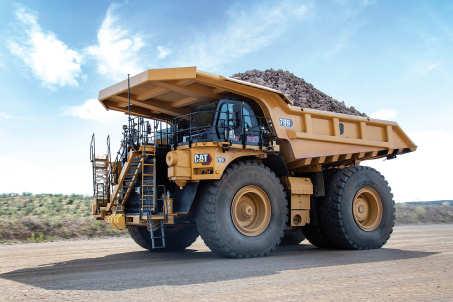
Cat showcases 789 mining truck
Industry giant Cat has launched its new 789 mining truck which promises to live up the legacy of proven performance already benchmarked by the company. The design offers a weight advantage over their competition to haul more material with every load and deliver a cost-pertonne advantage. The 789 moves more material with less fuel, offering up to 9% reduced fuel consumption compared to the Tier 2 design.
An advanced powertrain increases engine life by 12% and offers the highest horsepower in its class, meaning the mining truck features 10% more payload and is more than 5% faster on grade than competitors. Delivering long-life reliability, the new Cat 3516E engine features design modifications to the camshaft and piston for optimal fuel efficiency, and the structural improvements to the cylinder head and crankshaft deliver 12% more durability than previous engines.
The 789 allows a choice of numerous body style configurations to meet specific site needs. The High-Performance Body maximises payload by reducing the weight by 2-5 tonnes. The Mine Specific Body excels in mature mines, while the Combination Body combines features of high volume and optional liners to haul both ore and overburden. The more ergonomic cab also improves operator efficiency and productivity, with a 17% wider design with adjustable centre console offering 34% more operator space, 11% more legroom and 19% more shoulder room. The cab also offers 40% less Sound Pressure Level (SPL). The 789 next generation mining truck replaces the current 789 Stage V/Tier 4 Final model. The popular Cat 789D will continued to be produced and is available to markets outside of North America and Europe.
The new Cat 789 mining truck offers class-leading power, fuel efficiency, and more payload capacity.
Image Credit: Cat
KLEEMANN IMPACT CRUSHER OFFERS HIGH PRECISION WITH ALL ELECTRIC DRIVE
Kleemann has presented the latest member from their PRO line, the mobile impact crusher MOBIREX MR 130 (i) PRO, which is used as a primary and secondary crusher to combine output, precision and sustainability.
The impact crusher covers a wide range of applications, from soft to medium-hard natural stone to the processing of concrete, rubble and asphalt. With an hourly output of up to 600 t/h and a powerful electric 250kW drive, the crushing unit can guarantee a very high and stable throughput.
Due to its all-electric drive concept, E-DRIVE, with an option for external power supply, the MR 130(i) PRO can be operated on site emission free, therefore guaranteeing a low power consumption per ton of final product. Hydraulic oil is only required for set-up functions which reduces the environmental risk and maintenance costs, and the optional power pack housing ensures a significant noise reduction.
The MR 130(i) PRO’s high production capacity and top product quality are tied together by the robust crushing unit with two impact toggles and versatile rotor ledge options, and the 8.4 sq m optional double-deck post screening unit. This makes it possible with a single machine to produce two classified final grain sizes.
The use of optional wind sifter technology can optimised the final product quality further by removing contamination in the material, such as in wood and plastic. The airflow can be controlled depending on the material.
As the operation of crushing plants is becoming more sophisticated, the holistic operating system, SPECTIVE, from Kleemann, gives the operator different tools to facilitate their typical workday. With the large SPECTIVE radio remote control, the plants are moved from the low loader and the set-up procedure can be carried out a safe distance from the machine. The smaller remote can be used to execute all relevant functions from the excavator. The digital solution, SPECTIVE CONNECT, facilitates the work site digitalisation of the MOBIREX MR 130(i) PRO.
The MOBIREX MR 130(i) PRO is the latest in the Kleemann PRO collation.

Advertiser’s Index
Barco n.v...........................................................................................................5
IMECO Handelsgesellschaft m.b.H.......................................................43
JA Delmas S.A.S...........................................................................................37
Liugong Dressta Machinery Sp. z o.o.................................................51
Image Credit: Kleemann
WEIR AND STM ALLY TO ACCELERATE SUSTAINABLE MINING
Swiss Tower Mills Minerals AG (STM) have announced an alliance with Weir in which they will market STM’s innovative vertical stirred grinding mills for coarse grinding applications around the world. Integrating these mills into Weir’s minerals processing flow sheet will provide substantial improvements to customers in throughput and energy efficiency, helping them to meet their productivity and sustainability goals.
STM’s technology is well proven for energy efficient comminution in the mining market with more than 80 units currently operating in the hard rock mineral processing industry worldwide. It is used within the comminution segment of the minerals processing circuit as part of a series of crushing and grinding processes that create fine particles from minerals are extracted through floatation.
Comminution is one of the most energy intensive parts of the mine, accounting for 25% of the final energy consumption of an average mine site. Weir’s HPGR technology drive down energy consumption by approximately 40% for their customers.
Commenting on the alliance, Weir Minerals divisional president, Ricardo Garib, said, “Weir and STM share the same vision of enabling primary resource providers to produce resources in the most sustainable manner. This is a perfect match of best-in-class technology providers. Integrating STM mills with Weir’s comminution products, which includes Enduron high pressure grinding rolls (HPGRs) and Enduron screens, will improve throughput and help bring substantial reductions in carbon emissions.”
STM chairman, Fritz Moser, commented, “Both the HPGR and the STM vertical stirred mills provide significant energy savings compared to conventional grinding technologies. Our new supply agreement with Weir will enable us to fast track the roll out of an innovative flow sheet using STM mills in conjunction with Weir’s Enduron HPGR.”
A vital cog in Africa’s growing banking sector
Larry Khaduli, field services director East Africa at Schneider Electric, explains why the banking sector must look after its IT assets as it continues to advance in sophistication.
Schneider Electric Image Credit:
Larry Khaduli, field services director East Africa at Schneider Electric.
The African continent has one of the world’s most lucrative yet untapped banking markets in the world, according to analyst groups. With more than 700 banks, the continent is seeing a growth in financial technology, telcos and neobanks (online bank only).
However, to remain competitive, African banks must invest in new technologies which allow for capabilities such as automation and self-service to optimise their operations. Plus, technology adoption must go hand-in-hand with the stringent regulations, such as the recently published Basel IV that govern banks across the world.
As the African banking sector evolves so digital demands will increasingly start putting strain on existing technology infrastructure, pushing it beyond initial design standards. This, in turn, puts equipment at risk and possibility of failure which can be catastrophic to a bank and its customers.
Furthermore, while the sector and its customers become more sophisticated, it is also giving way to increasingly complex and varied computing environments. For example, in Tanzania, which currently has 35 commercial banks, the country is seeing an increased adoption of mobile consumers using banking apps to conduct daily transactions.
Instead of supporting one monolithic infrastructure, banks now have to manage distributed platforms and need to deploy hybrid cloud and edge solutions as well as expand existing data centres. Also, banks must partner with suppliers that offer the requisite support to ensure their infrastructure always runs optimally and securely.
This is where standardisation, speed of deployment and overall IT cost reductions come into play and micro data centres, edge computing and modular, scalable UPS solutions are feasible options to meet the needs of an expanding, sophisticated banking sector and customer base.
In tandem with the above, should be maintenance contracts with expert suppliers that ensure equipment is monitored, managed and potential failure mitigated with sound predictive maintenance practices in place. In the event of equipment failure, an expert field services team must be able to quickly find a solution and ensure operations are up and running in no time.
To remain competitive, African banks must invest in new technologies. Providing peace of mind

Schneider Electric’s EcoStruxure Asset Advisor is a cloud-enabled predictive analytics solution that manages the performance of banks’ assets and is provided as a service through our global field services team. Solutions such as this provide insight into the operating conditions of banking assets, mitigating the risk of equipment electrical failure. It offers banks with complex building infrastructure peace of mind that a trusted source with OEM expertise is looking after their assets.
By partnering with an OEM that offers an intuitive solution, backed by expert field services team, banks benefit from a predictive approach that supports other on-site service and preventative maintenance plans while improving CAPEX planning such as proactive equipment replacement based on condition.
Predictive maintenance can also determine maintenance adjustments for improved cost optimisation and risk mitigation, such as keeping staff safe through early warnings and maintaining critical processes.
Ultimately, as the African continent’s banking sector grows and becomes more sophisticated, it is vital that institutions look after the reliability and performance of their IT assets in head offices and branches. Cloud-based IoT solutions in partnership with a field service team will allow banks to stay one step ahead of downtime or failures. ■

